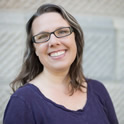Shelley AJ Jones
(PALM 493)
Shelly plans to use her stipend to transform an existing assignment in PALM 493, South
Carolina Studies, to have a digital component. Currently, she assigns an image archive
paper, which asks students to argue for the inclusion of an image from the South Carolina
Digital Library into course materials. The new assignment would require at minimum
six images and instead of formal argumentation, students would supply captions for
the images to include citation, historical positioning of the image in relation to
the existing course materials, and questions for discussion. This new assignment will
further students’ exposure to digital tools and means of communication, while underscoring
the learning goals of the course through shared perspectives of the State.
The current mode of submission is traditional and limiting. Students submit formal
papers with a link to the image using a drop point through a Blackboard discussion
board. Even if students embed images properly, this method makes for an inelegant
and hard to access presentation. Shelly’s proposal is to revise the assignment so
that students’ image choices are curated and shared via an existing digital tool.
The stipend will allow her to work with Center for Digital Humanities staff members
to identify the best tool to curate and share digital images of this sort, to develop
clear instructions for using the technology tool and rubrics for grading, and, potentially,
to complete a test run of the assignment. She will also work with CDH staff members
on issues of accessibility, making sure that the chosen technology can be accessed
by students who need accommodations and by those who have limited access to and practice
with digital tools
Shelly is excited by these revisions to the image archive assignment because they
will empower students to shape their and their classmates’ experience of the course.
There is the potential to build the assignment semester to semester, as well, which
would allow student and instructor access to a rich archive of relevant, curated images.
Shelly often tells her students that their perspective of the State is as valid as
their published textbooks’; this digital assignment will prove that to be so.
|
 Jones Jones
|
Saskia Coenen Snyder
(HIST 380)
Since the Fall 2008 semester, Saskia has offered a “History of the Holocaust” course,
first as a special topics course (HIST 492), but currently as part of the regular
History Department course curriculum (HIST 380). This course introduces undergraduate
students to Nazi Germany’s systematic mass murder of Europe’s Jews and other minorities
during the Second World War. While this course has been highly popular among USC undergraduates,
it is time to “modernize” it and incorporate new digital components into the course
material, into class assignments and into the students’ overall learning experience.
The Digital Humanities Course Development Stipend, as well as the expertise offered
by the CDH staff, will allow Saskia to do so.
HIST 380’s content is currently almost exclusively print-based, i.e., most of the
reading and writing assignments engage primary- and secondary literature that Saskia
has selected and uploaded onto Blackboard. Given the available digital research collections
on the history of genocide, however, and considering the skills of our young undergraduates,
she intends to give her students considerably more agency in finding, selecting, and
evaluating digitized source materials. Rather than being presented with a primary
source by their professor, students will now become historians in their own right,
finding the evidence for analysis themselves.
Saskia will make use of the technical support of the CDH and CTE to create a class
web page that allows students to submit weekly postings to their own digital journal
while being able to read and comment on those of other classmates. She will also use
the assistance of the CDH and the CTE to help incorporate archival sound and film
material into her lectures. There is maximum potential here for students to experience
a university course on the Holocaust in a much more powerful way than is currently
the case, by using these materials in their learning experience.
|

Snyder
|


 Jones
Jones